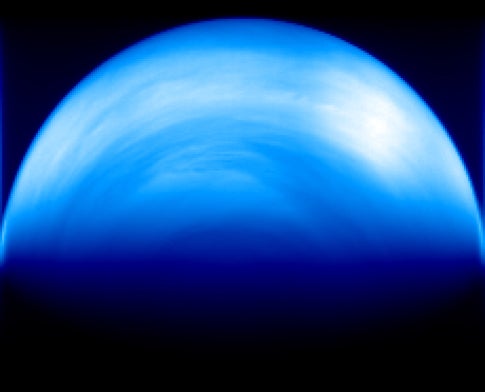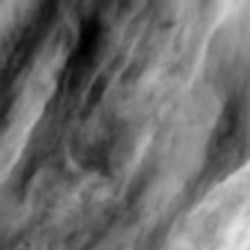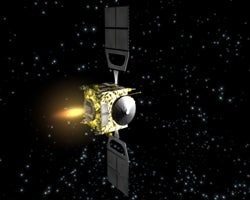New images and data from ESA’s mission to Venus provide new insights into the turbulent and noxious atmosphere of Earth’s sister planet. What causes violent winds and turbulences? Is the surface topography playing a role in the complex global dynamics of the atmosphere? Venus Express is on the case.
Venus’ atmosphere represents a true puzzle for scientists. Winds are so powerful and fast that they circumnavigate the planet in only four Earth days — the atmospheric “super-rotation” — while the planet itself is very slow in comparison, taking 243 Earth days to perform one full rotation around its axis.
At the poles, things get really complicated, with huge double-eyed vortices providing a truly dramatic view. In addition, a layer of dense clouds covers the whole planet as a thick curtain, preventing observers from using conventional optical means to see what lies beneath.
On the contrary, Venus Express is capable of looking through the atmosphere at different depths, probing it at different infrared wavelengths. The Ultraviolet, Visible and Near-Infrared Mapping Spectrometer (VIRTIS) on board is continuing its systematic investigation of Venus’ atmospheric layers to solve the riddle of the causes for such a turbulent and stormy atmosphere.
With its multi-wavelength eyes, VIRTIS can observe the atmosphere and the cloud layers not only at different depths, but also both in the day and night side of the planet — a characteristic that allows an overall assessment of the “environmental” causes that can be at the origin of such an atmospheric complexity.
At the equator, the extremely violent winds of the super-rotation are in constant “battle” with other kinds of local turbulences, or “regional” winds, creating very complex cloud structures.
One type of regional wind is due to the strong flux of radiation from the Sun reaching the atmosphere of the planet on the day side. This flux heats up the atmosphere creating convective cells, where masses of warm air move upwards and generate local turbulence and winds.
On the night side there is no flux from the Sun, but the clouds’ shape and the wind dynamics are somehow similar to those we see on the day side. So, scientists are currently trying to understand if there is any mechanism other than “convection” responsible for the equatorial turbulences, both on the day and night sides of Venus.
Actually, the Venusian topography may play an important role also in the global atmospheric dynamics. Understanding this surface-atmosphere connection is one of the major objectives of Venus Express — something to be verified throughout the whole course of the mission.












